Samsung S90C review: a step down in price, not in performance
Samsung's mid-level QD-OLED TV, the S90C, is a marvel in almost every way

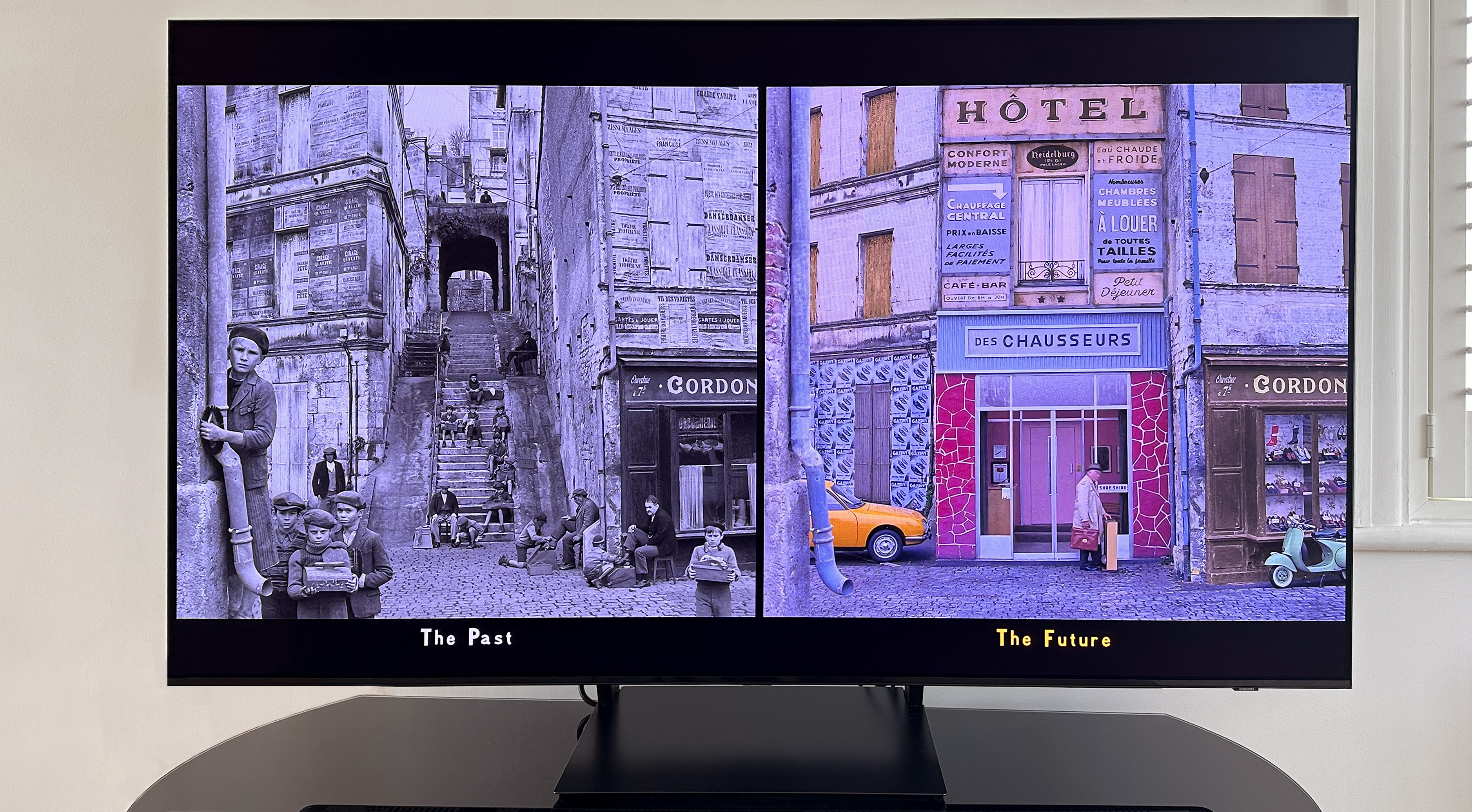
Having seen the light where OLED technology is concerned, Samsung is busy making strides - the S90C is all the evidence you need. Overlook its tardy Smart TV interface and the ongoing lack of Dolby Vision HDR, and everything else about this TV will satisfy and impress in equal measure.
-
+
Bright, high-contrast, very accomplished images
-
+
Reasonably full-range, robust & balanced sound
-
+
Slim, good-looking design
-
+
Cheaper than S95C
-
-
No Dolby Vision HDR
-
-
Upscaling has its limits
-
-
Less brightness than S95C
-
-
Smart TV interface is lethargic
Why you can trust T3

Forget cheap and cheerful, and forget whistles-and-bells flagship models - the real action where the best TVs are concerned is somewhere in the middle. That’s where the ratio between performance, price and functionality is at its sweetest - and that, hopes Samsung, is where its new S90C range of QD-OLED TVs will catch your eye and, ultimately, your cash. Indeed the S90C may be the better option for you over the brighter and pricier S95C.
Certainly the S90C looks the part, both as an object and where its on-paper specification is concerned. There are 55- and 65-inch models to choose from (and, according to Samsung's site, a 77-inch one in the USA only). It’s a product of one of the most credible TV brands around. It wants to be your gaming monitor as well as your television. All it needs to do now is blow your metaphorical socks off with its performance, and we’ll be able to chalk another one up to the Korean giant.
Samsung S90C: Price & Availability
The Samsung QE55S90C (that's the 55-inch model) is on sale now, and in the United Kingdom it sells for £2199. Samsung’s not alone in developing specific models for specific territories - but the S90C, with minor specification differences, is on sale in the United States at $1899 for the same scale. In Australia, it costs AU$3299.
The step-up Samsung QE65S90C (i.e. the 65-inch model) is a little pricier, at £2999 in the UK, $2600 in the USA, or AU$4299 in Australia. The rogue QE77S90C (you guessed it, 77-inch model) is priced at $3600 in the USA, which is pretty great for such a massive screen.
As we all know, the best OLED TVs market is about as competitive as it gets - so there are similarly specified, similarly positioned models from most of the usual suspects (most obviously LG, Panasonic, Philips and Sony) which cost broadly similar money. Just like every other model in Samsung’s range, then, the S90C has a scrap on its hands…
Samsung S90C review: Features & What's New?
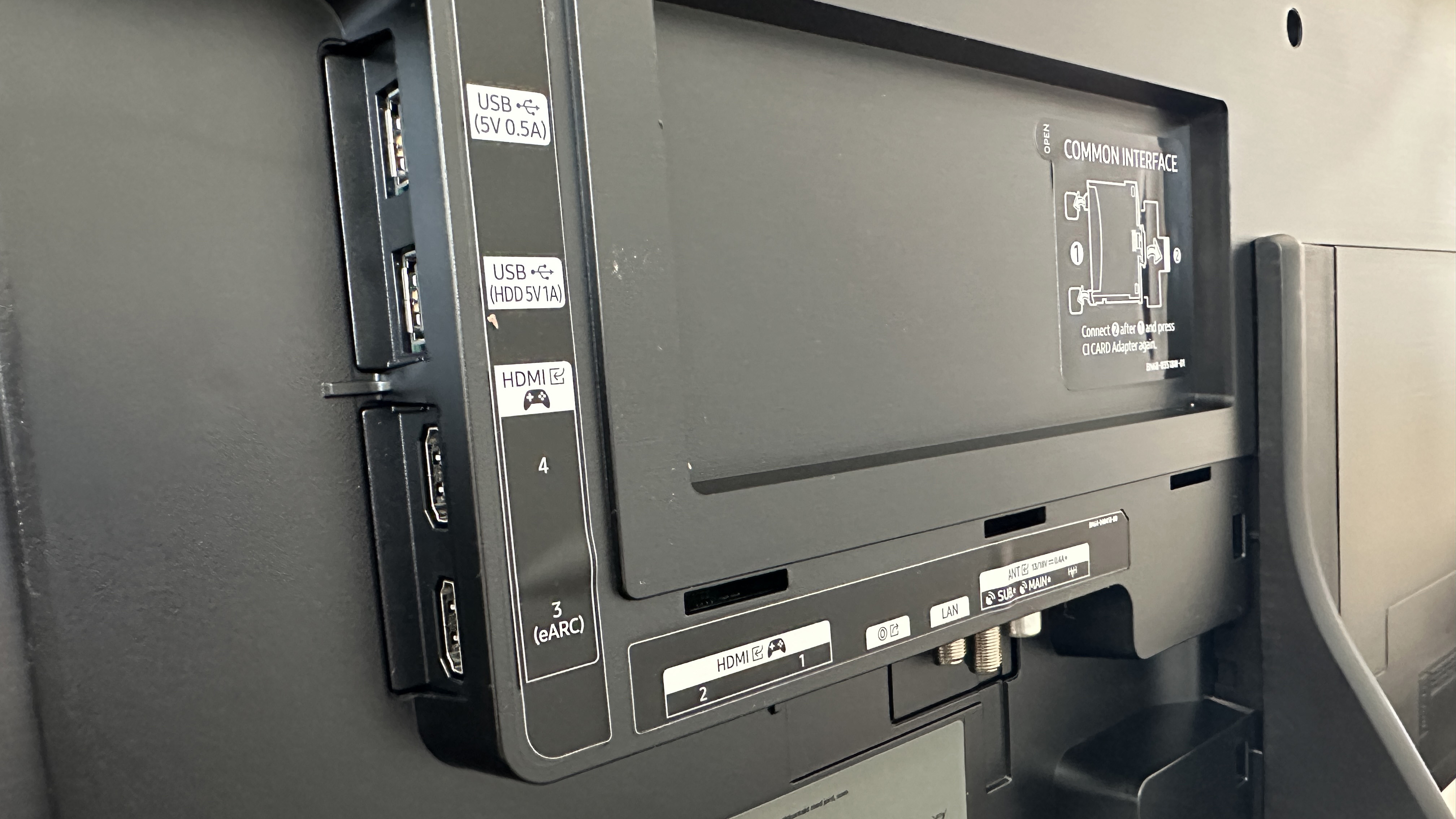
Broadly speaking, the S90C is a mild reworking of 2022's S95B model - but don’t imagine that’s in any way a put-down. The S95B remains extremely well-regarded, profoundly competitive and an all-around excellent range of televisions - and if it ain’t broke, there’s no need to fix it. Just refresh it a little and shave a slice off the asking price.
So as far as ‘what’s new’ is concerned, the biggest difference here is the upgraded screen filter. It means the S90C is less reflective, and less prone to being affected by ambient light, than even the S95B - and it’s also a contributor to the fact the S90C is a little brighter than the S95B in absolute terms, too. Otherwise, it’s Samsung QD-OLED business as usual - which is never a bad thing.
Samsung is the company that spent an awfully long time pretending OLED technology didn’t exist, so naturally it’s had to put its own spin on the technology - and in the case of QD-OLED that means a panel of blue OLED illuminating each pixel, with Quantum Dot layers creating the green and red sub-pixels. This means there’s no issue with blue OLED pixels decaying faster than the red or green equivalent, and it means - in theory, at least - greater peak brightness and greater colour fidelity.
And Samsung, of course, is the company that’s spent an awfully long time pretending Dolby Vision HDR doesn’t exist - but in this case, there’s no face-saving variation. The S90C goes without the world’s most popular dynamic metadata high dynamic range (HDR) standard - and it’s just as irritating an omission here as it is in every other Samsung TV. HLG, HDR10 and HDR10+ are catered for, though.
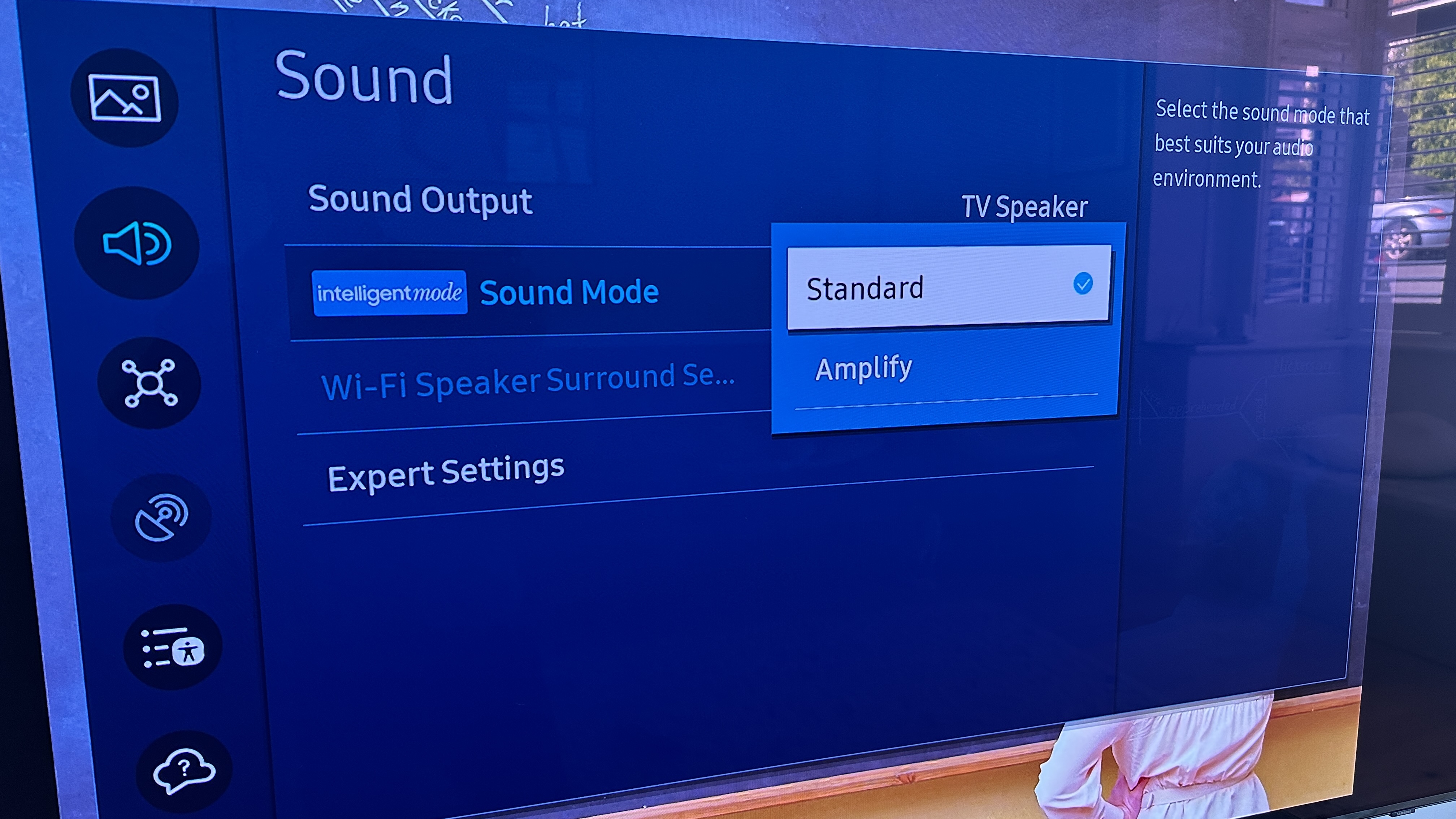
Wireless connectivity is dealt with by Bluetooth 5.2 and dual-band Wi-Fi. Physical connections run to four HDMI 2.1 inputs (all able to deal with 4K resolution at 120Hz (and 144Hz) and all ready to exploit the best of your games console’s features), one with eARC capability; a couple of USB slots; an Ethernet port; a pair of aerial posts for the S90C’s twin TV tuners; and there’s a digital optical output for use with a less clever soundbar, too.
Sound is dealt with by a downward-firing 2.1 array driven by 40 watts of power. The S90C can deal with Dolby Atmos soundtracks, and features Samsung’s Object Tracking Sound Lite in an effort to create a sensation of sonic movement to follow the on-screen action. It’s also compatible with Q-Symphony - so an appropriate best soundbar for your Samsung set can allow the TV’s audio system to join in with, rather than be overridden by, its own efforts.
Samsung S90C review: Performance
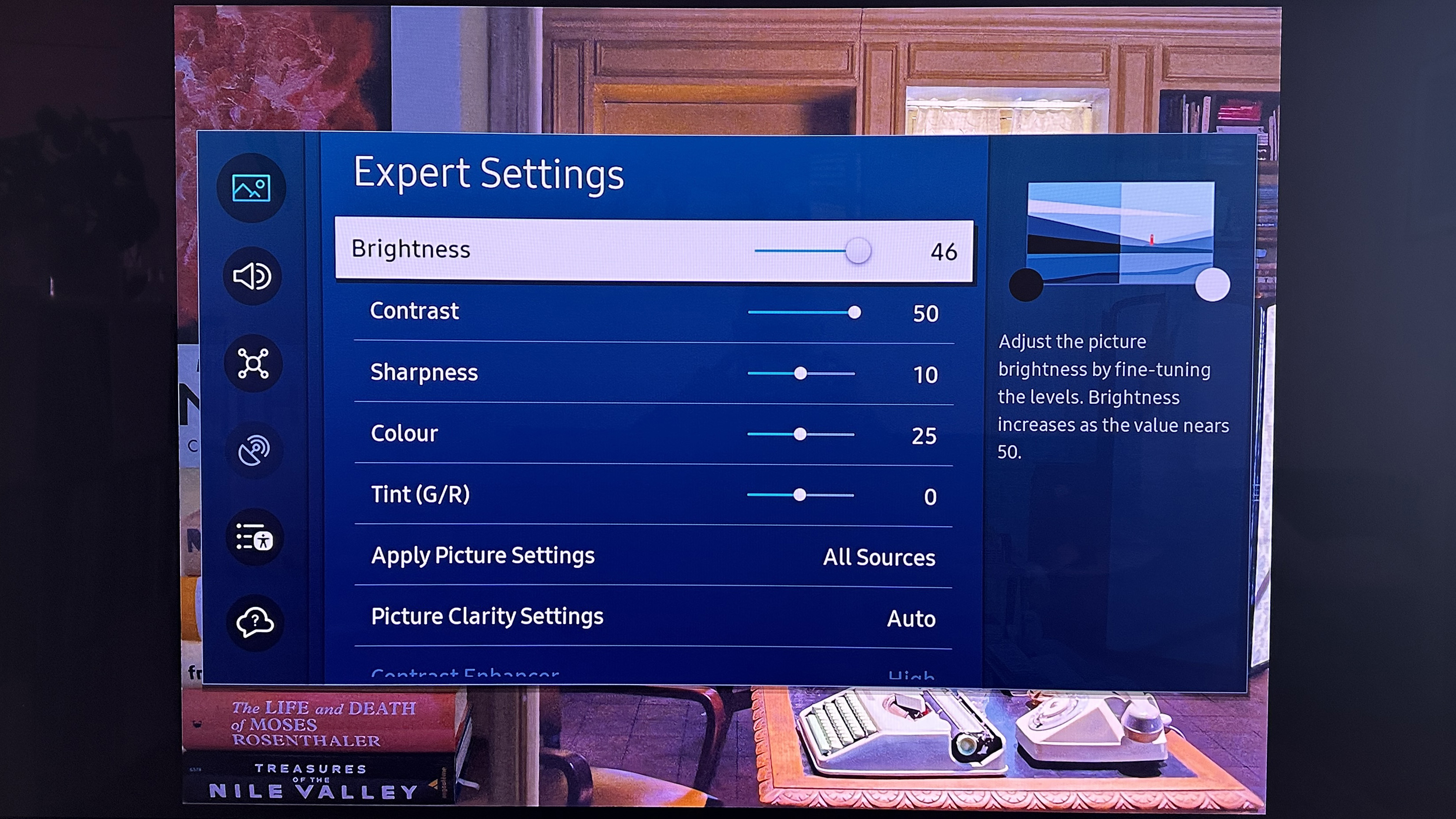
It almost goes without saying that the Samsung S90C does its best stuff, picture-wise, when given the best stuff to work with. Given that it’s not interested in Dolby Vision, that means hunting down some 4K content with an HDR10+ HDR aspect to it - and if you can make the effort, the rewards are there in spades.
Or, at least, they are if you’ve taken the time to run the ‘Smart Calibration Pro’ routine to get the Samsung close to where you want it to be. And then had a little tweak in the set-up menus yourself. Once that’s done to your satisfaction, you’re free to admire all the impressive aspects of the S90C’s performance.
It’s a given with OLED screens that black tones are deep and lustrous. In addition to the straightforward inkiness, though, the Samsung offers great variation and gradation of blacks - there’s a stack of detail revealed in even the dimmest, darkest scenes that lesser televisions simply describe as ‘black’. In conjunction with the impressive brightness the S90C can muster, contrasts are wide and convincing - and there’s a similar amount of information carried in the white tones the Samsung serves up. You’ll never find yourself concerned you’re missing out on any nuance at either end of the scale.
In between, the Samsung is never less than vibrant where colours are concerned - but it steers well clear of ‘overblown’. It draws from an extensive colour palette, and does particularly good work with skin tones and skin textures - there’s a huge amount of variation here, and the S90C is never less than natural and convincing.
Edge-definition is smooth and confident, and in the scenes that require it there’s significant depth of field too. Motion is controlled with real positivity, and if the processing engine is working hard to keep a grip on the most complex scenes it never betrays itself.
Stepping down in quality to some 1080p stuff or even bog-standard broadcast TV doesn’t stress the S90C, either. Detail levels aren’t quite so stratospheric, it’s true, but the colour balance, edge definition and motion control don’t take any discernible hits. This Samsung is a very capable upscaler, and you have to show it some really vintage content in order to find its limits. Sure, if you’re an aficionado of daytime TV reruns you’ll end up with pictures that are soft yet ragged, vague yet edgy, and overall a bit of a mish-mash - but really, that’s the case with virtually every TV at virtually every price-point.
Fire up a games console and switch to ‘Game Mode’ and the good news keeps on coming. Images have all of the positives of contrast, colour fidelity, motion control and so on - and the Samsung’s facility with detail retrieval and, in particular, lighting is never less than impressive. It’s a smooth and responsive monitor, with an input lag of less than 10m/s - which, let’s be honest, is more than quick enough.
The Samsung doesn’t disgrace itself when it comes to sound, either. It delivers quite robust, well-balanced audio, with more than a gesture towards bass and plenty of composure in even the trickiest circumstances. There’s not much scale to the sound, to be fair, and the idea that it can escape the confines of the cabinet turns out to be fanciful - but it’s not at all bad by the standards of integrated TV audio systems. It’s even quite dynamic.
Samsung S90C review: Design & Usability

The S90C is a slim and quite elegant device, especially when seen in profile. Many OLED TVs can manage only a little of that spooky OLED skinniness, but a good portion of the S90C is vanishingly slim. Even at its chunkiest it’s less than 4cm deep. So although it’s provided with a simple, usefully compact click-on stand, it will look better than most price-comparable alternatives when hung on the wall. The minimal bezels, and general standard of fit and finish, mean it’s a very acceptable looker from dead-ahead, too.
The S90C uses the latest version of Samsung’s 4K Neural Quantum Processor, and as well as dealing with the critical business of picture quality, it also runs the screen’s Tizen-based operating system. As is standard practice with Samsung, both the set-up menus and the smart TV interface are well laid out, logical and easy to navigate. The smart TV home page is easy to customise and features every app worth featuring (and quite a few less worthwhile alternatives, too). It’s worth noting, though, that although the S90C was hard-wired to a router during this test, the Smart TV is notably slow to load apps and the content thereof.
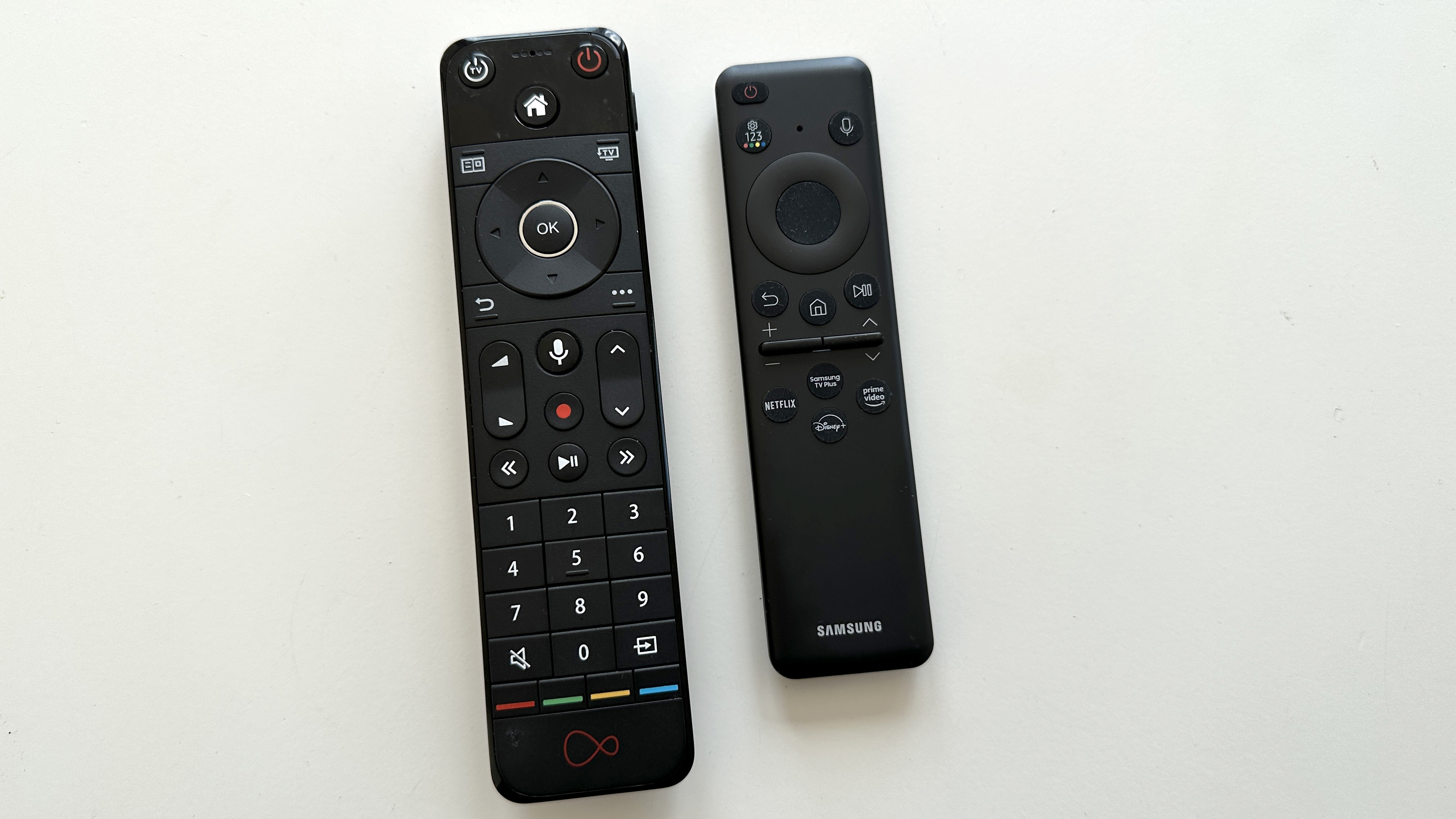
As is the fashion lately, the Samsung S90C ships with a couple of remote control handsets. The first is a small, plastic full-function number with the ‘direction’ arrows and ‘OK’ button in the middle of them too low down to make holding it a particularly comfortable experience. The other is an even smaller, solar-powered alternative that just covers the most common commands and has a few direct-access buttons to the most popular streaming services.
There’s also the SmartThings control, which - at least as far as set-up is concerned - simplifies things more than somewhat. It’s where you can access Samsung’s ‘Smart Calibration Pro’ feature using an iOS or Android smartphone - as long as the TV and your phone are on the same network, there are just a few test patterns and instructions to be followed. And then your TV will be a lot closer to ‘ideal’ in the way it’s set up than it was when it came out of the box.
After that, you may choose voice-control over the rather unsatisfactory remote handsets. Bixby is built in, of course (which is mostly, I imagine, of use to Samsung employees alone), and the S90C works with Amazon Alexa and Google Assistant too. There’s even Siri available via AirPlay 2.
Samsung S90C review: Verdict

The Samsung S90C has plenty of picture-making talent, the chops to satisfy all but the most hardcore gamers, and an audio system that won’t send you straight back to the shop to buy a soundbar. It's really impressive.
If only its Smart TV interface could rouse itself and the company could just swallow its pride where Dolby Vision is concerned, it would be a compulsory audition.
Despite Samsung having taken so long to climb aboard the OLED bandwagon, it’s making quite rapid year-on-year progress with the technology - and the S90C is a very competitive and sensibly-priced TV indeed.
Also consider
Yes, it’s more expensive - but the LG G3 comes at a premium for good reason. Its MLA technology means it’s stunningly bright and vibrant by OLED TV standards, it creates stunning 4K images and it has a Smart TV interface that responds promptly. It looks the absolute business when hung on the wall too (which is just as well, as a table-top stand only adds to the price).
Alternatively, you'll actually find the older Samsung S95B for far less cash at the time of writing, making it an obvious choice for would-be S90C buyers. Or, if you have more money to spare, then the even newer S95C is even brighter than any of the aforementioned models and may be the pinnacle option to pick.
Sign up to the T3 newsletter for smarter living straight to your inbox
Get all the latest news, reviews, deals and buying guides on gorgeous tech, home and active products from the T3 experts
Simon Lucas is a freelance technology journalist and consultant, with particular emphasis on the audio/video aspects of home entertainment. Before embracing the carefree life of the freelancer, he was editor of What Hi-Fi? magazine and website – since then, he's written for titles such as Wired, Metro, the Guardian and Stuff, among many others. Should he find himself with a spare moment, Simon likes nothing more than publishing and then quickly deleting tweets about the state of the nation (in general), the state of Aston Villa (in particular) and the state of his partner's cat.
-
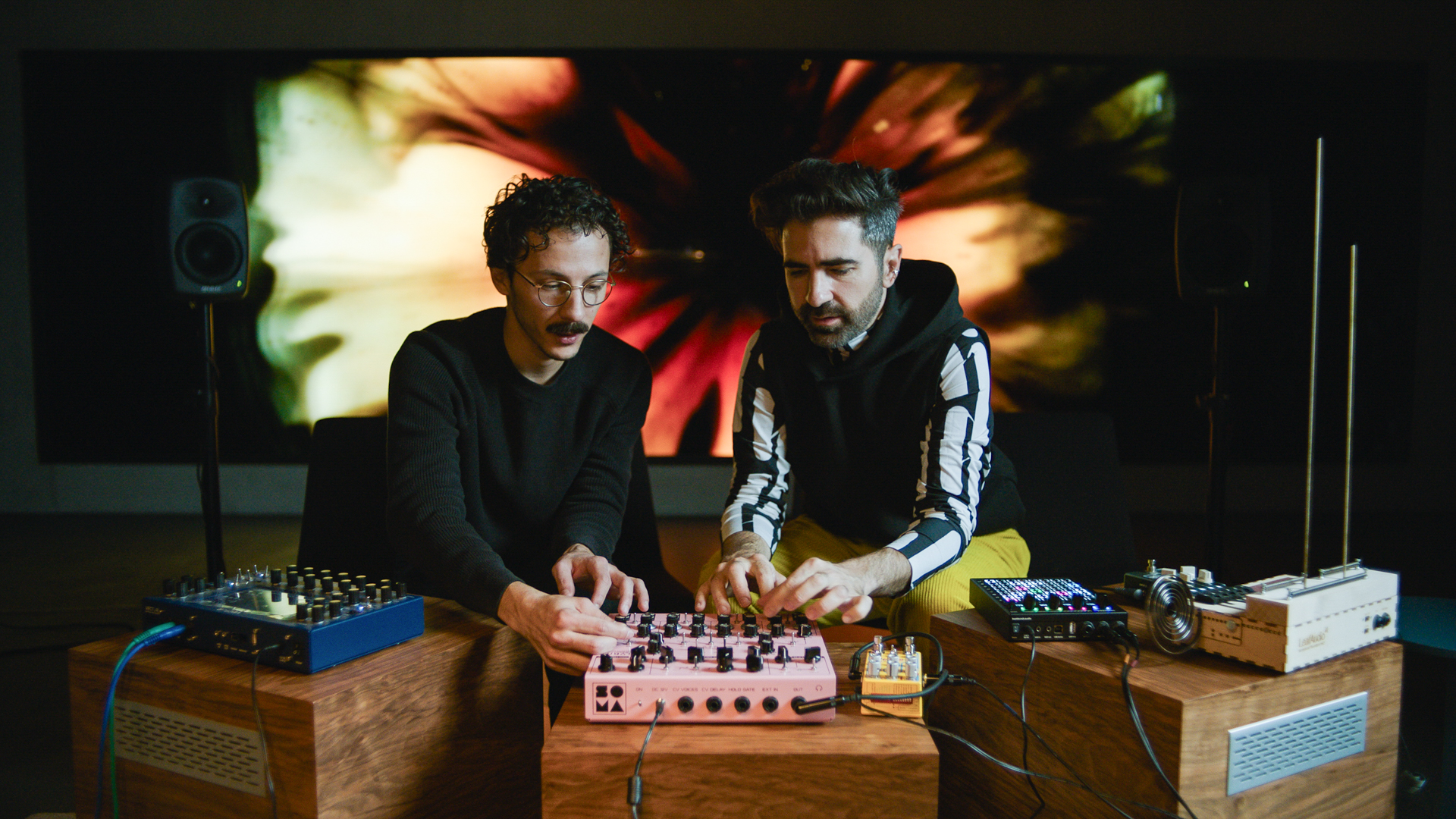 This is the sound of BMW's upcoming Neue Klasse EVs
This is the sound of BMW's upcoming Neue Klasse EVsHas BMW cracked the problem of making EVs sound fun with its next-gen soundscape for its Neue Klasse cars
By Alistair Charlton Published
-
 Build unshakeable core strength with a kettlebell and these three exercises
Build unshakeable core strength with a kettlebell and these three exercisesAdd this to the end of your workout to fire up your midsection muscles
By Bryony Firth-Bernard Published
-
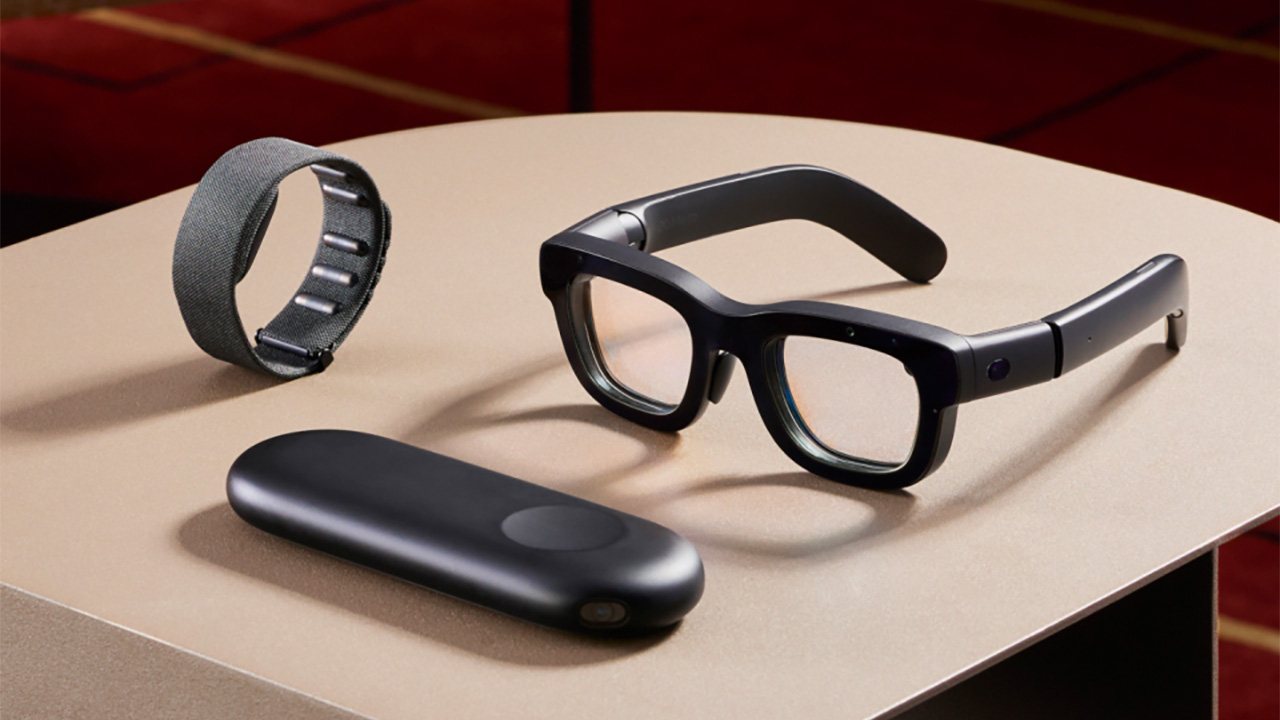 The next big tech battlefield is AR Glasses – and Apple is ready to fight
The next big tech battlefield is AR Glasses – and Apple is ready to fightTim Cook is said to "care about nothing else"
By Sam Cross Published